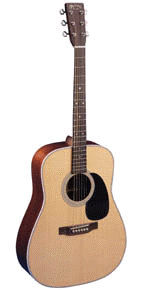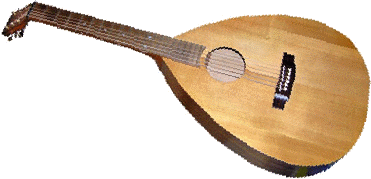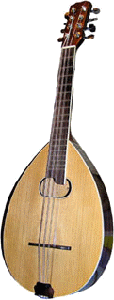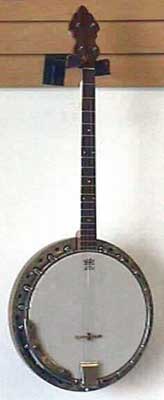Performance Style
Lory: A blend of Celtic, Appalachian,
and Old Time styles on mandolin, Medieval-Renaissance squealing on the fiddle,
and Maybelle Carter and Alan Oresky styles on guitar, make up the fast-picking
tunes. For plaintive Irish and Scottish airs Celtic styles and ornamentation
are used on the flute and recorders; while, a more conventional recorder
technique is used with English and French Medieval and Renaissance airs.
Mandolin styles on airs are a mixture of Celtic ornamentation with Italian
tremolos on sustained notes.
Musical Background
Lory: Self-taught in both music theory and all of her instruments. She was
fortunate to have learned a lot from four terrific music teachers - Alan
Oresky, Harvey Beavers, Ernie Robinson, and Joan Beavens - who taught both
her sons while she assisted them at Buck Lodge and Hyattsville Middle
Schools.
Karen: Studied music in chorus
and chamber choir under Joan Beavens while attending Hyattsville Middle
School and Dr. Mary Babbitt in Northwestern High School. She performed at
Solo and Ensemble Festival in Prince George's County singing Johann Christian
Bach's "Privo Del Mio Tesoro" from his 1776 concert cantata
Cefalo e Procri. Karen scored a 1 overall. At State Solo and Ensemble,
Karen sang Handel's "O Had I Jubal's Lyre" from his oratorio
Joshua scoring an overall 2.
Sight-Reading & Computer
Music
Lory: "Years before I ever met the aforementioned music teachers, my
daughter Karen was going to perform an opera aria for the Solo and Ensemble
Festival at school. She first needed to have some way to practice, and she
needed a piano accompaniment. The aria had not been performed since 1786,
and all we had was the orchestral score photocopied from microfilm of the
autograph score at the Library of Congress. The burden of transcribing
it and reducing it to piano accompaniment fell on me. My knowledge of
sight-reading totalled, at that time, to what I had learned in the Trapp
Family Recorder book.
"With Karen's help I blundered
through programming the music on the computer, which she taught me as we
went along, so she would have something to practice with. Her dad, Bruce
Harrison taught me Assembly language, and the computer music soon launched
into a business with Harrison Software. Through the constant repetition of
typing in music from score, a little coaching from Karen and a few books,
I had mastered sight-reading.
"I credit my real knowledge of
understanding music to my favorite composer, Johann Christian Bach. My interest
in J.C. Bach began in the 1980s when I first took notice of his music. Since
then, I scored many of his works for computer sound chip, beginning with
the opera aria mentioned above, then later for MIDI - all the while absorbing
all I could. I learned the rules of sight-reading, accidentals, ornamentation,
phrasing, composition, etc. from him."
Guitar
Lory: "I first started picking out tunes on the guitar at about the age of
9 or 10, but it never amounted to anything more. When folk music was the
rage in the 60's I learned to accompany myself when I sang my favorite songs.
It was mostly 3-chord wonders and Have Capo Will Play to anyone who
would listen. Mostly I played the Maybelle Carter style. Years later I began
to experiment with the guitar as a melody instrument, so I implemented Alan
Oresky and Doc Watson styles along with the Maybelle Carter style, and adapted
them to everything I played."
Karen taught herself the guitar
while in Hyattsville Middle School. Her accompaniments with Flatpickin
on guitar exhibit quite a bit of variety and imagination, always appropriate
to the tune being played. She has an early 1980s model Harmony,
a beautiful copy of a Martin D-35 with a 3-piece back and a big sound,
and most recently a classical guitar. She also owns a 12-string by Conn
instruments which, despite its generic marketing, has a wonderful warm
and sweet sound. Her favorite instrument, however, is Lory's 1966 Martin
D-28. |
 |
 |
"Renaissance" Guitar
Lory: It isn't really a Renaissance guitar, but it looks like it could be
- maybe - okay, maybe not. People can't resist asking "What is THAT?" They
are often reminded of the huge Mexican Guitarron used in Mariachi bands.
Karen or Lory usually answer, "A mandolin on steroids." That always
evokes a laugh. Nobody laughs when Karen plays it, though. It
sounds great! Lory uses silk and steel or silk and bronze strings on it,
making it a breeze to play. This guitar can be purchased as a kit or ready-made
from Musicmaker's
Kits. |
Autoharp
Lory: A love of Mother Maybelle and the 2nd generation Carter Family drew
Lory to the autoharp. "I got my first autoharp in the late 60s, a 12-chord
Oscar Schmidt. I listened to Mother Maybelle Carter, and learned to play
it easily; then, I soon adopted her playing style.
Recorders
Lory:
"I
got my first recorder with 2 books S&H Green Stamps. It was a Hohner,
made of pearwood, and I learned to play it from a Trapp Family Book for $1.25,
I was soon playing tunes on it. Years later when I was playing the recorders
in conjunction with MIDI music at computer shows, I began to play the instrument
more seriously.
Flute
Lory: "Playing the flute was an easy adjustment for someone who played the
recorder. When my sons entered Buck Lodge Middle School I assisted the band
teacher, Mr. Beavers, with various duties - mainly sitting with and tutoring
the less experienced flute players, so I got a lot of practice playing the
flute. Now I use it mainly for Irish airs learned from the playing of James
Galway and Matt Malloy."
Mandolin
Lory's interest in the mandolin came from listening to the playing of Alan
Oresky. He is probably one of the best mandolinists and fiddlers in the
Washington D.C. area who is well-rounded in all forms of folk and classical
music. He played a Medieval Faire with Karen and Lory, and showed them a
lot of neat styles on the mandolin, everything from bluegrass to Sfardic.
|
 |
The mandolin/mandola pictured above
is a 10-string which Lory found at House
of Musical Traditions. It has a full sound, especially in the lower
registers, not thin like modern American mandolins. Many Mexican, Central
and South American luthiers don't seem to adopt the shallower design of the
American Bluegrass models. Rather they stick with the old designs which date
back to the Renaissance except for modern conveniences like geared tuners.
The policy of the anonymous Mexican luthier who made this instrument seemed
to be, "If it ain't broke, don't fix it."
Renaissance mandolins and mandolas had anywhere from 4 to 12 strings, the
courses laid out any way the musician or luthier wanted them. This one is
basically the same as the French flatback mandores of the Renaissance and
French flatback mandolins of the 18th-century. The major differences are
modern tuners, tailpiece and a straighter head. "Mine originally had
4 courses - 2 Gs, 2 Ds, 3 As and 3 Es. It was customized for me by Jim Bumgardner
into 5 courses - 2 D/Cs, 2 Gs, 2 Ds, 2 As and 2 Es." It is the perfect instrument
for doing Renaissance Faires and a great conversation piece.
Karen is self-taught on mandolin
with a style that is rather direct, unadorned and straight forward. Her favorite
tunes to play on mandolin are the Celtic ones. Her mandolins are a
modern Sigma A frame with a round hole with a sweet sound with a lot
of resonance, well suited to Celtic music, and modern Washburn A frame with
f holes which sounds great with those Old Time fiddle and Bluegrass
tunes.
Octave mandolin
Lory: "This instrument was so neat, I couldn't resist buying it. I can't
play the lute, so this is the perfect substitute; afterall, the mandolin
is a member of the lute family. It's great for Medieval tunes meant for the
lute. This one from Lark
in the Morning sounds more like an ancient cittern. I like to
keep it in G tuning with Silk and Steel strings with the last 4 strings tuned
in octaves.
"Later I acquired a Trinity College
octave mandolin better suited to Celtic music (purchased from
House of Musical Traditions).
Both models have short necks, deep voices and go like the wind. They provide
a great contrast when we play with Lee Davenport and his harp." |
 |
Fiddle
Lory : "My son, Jean-Guy, showed me the first few things about playing
the fiddle when he first started playing. It took me longer to learn how
to play it than the mandolin, but I got the practice when I helped out with
the Prince George's County Junior Youth Orchestra. I adopted a sort of pseudo
Medieval-Renaissance style, trying to emulate the viola da gamba and rebec,
then adapted it to all of the fiddle tunes I played. Later Alan Oresky helped
me to smooth out the rough edges, and he still does."
Karen is also self-taught on the fiddle.
She bought her brother Jean-Guy's Stainer copy. |
 |
|
